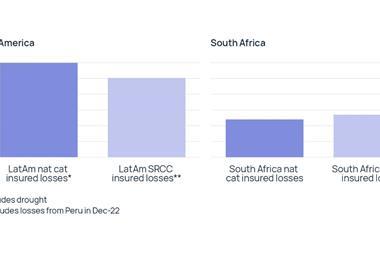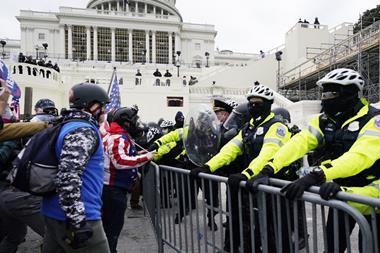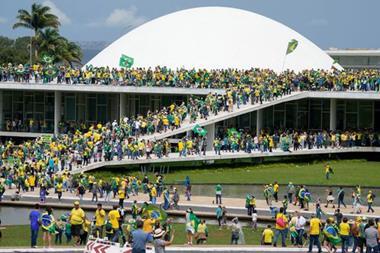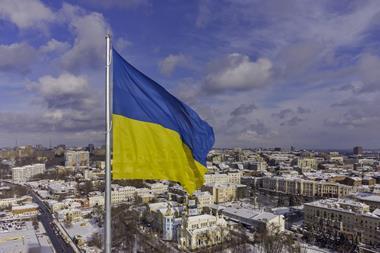New research from DBRS Morningstar finds that the riots in France could have severe impacts on the global strike, riot, and civil commotion insurance (SRCC) market. Here’s what risk managers need to know
What’s happening?
The death of 17-year-old Nahel Merzouk at the hands of a policeman, led to five nights of rioting across France last week.
Newspapers have reported that the civil unrest led to 2,000 cars burned, hundreds of public buildings trashed and more than 3,000 people arrested.

The protests marked the third major incident of civil disorder during Emmanuel Macron’s presidency, including public protesting over pensions rights.
In fact, France has had a long history of civil unrest in the last two decades, including the November 2005 riots, when over 10,000 vehicles were burnt and over 300 public and private buildings were damaged.
The French Federation of Insurance Companies (Fédération Française de Sociétés d’Assurances) estimated that insurance claims for the November 2005 riots totalled approximately EUR 200 million (270 million in today’s euros).
“We believe total insured losses for the French insurance industry should remain well below the EUR 1 billion mark,” said Marcos Alvarez, Global Head of Insurance at DBRS Morningstar.
”Additionally, we anticipate that direct insured losses due to the riots will remain manageable for most French insurers with limited impact on their credit profiles due to reinsurance protections in place and the partial liability of the French state for some of the losses.
”Given the rising materiality of recent SRCC losses, we expect that insurance and reinsurance companies will continue to apply stricter underwriting guidelines in the most conflictive jurisdictions, including reducing the availability of these coverages.”
What it means for risk managers
Property damage caused by strike, riot, and civil commotion (SRCC) is part of the specialized war, terrorism and political violence insurance market, which provides coverages that complement those underwritten under standard business insurance policies.
In the last few years, the rise in frequency and severity of SRCC events globally has prompted many insurance companies to reduce policy limits for these risks or drop their coverage altogether from standard insurance policies.
This has made commercial clients rely more on standalone SRCC insurance providers such as the London Market and certain global specialised reinsurers.
“We anticipate that insurance companies will no longer consider SRCC an accessory coverage but a primary risk subject to stringent limits and pricing.”
Nevertheless, even these providers have recently been limiting the risks they cover, particularly in traditionally volatile parts of the world.
DBRS Morningstar said: ”Although we expect total insured losses to be ultimately manageable for the French insurance industry, the latest episodes of civil violence that have propagated through France will add to the concerns of specialised providers of SRCC insurance around the world, as well as of the more traditional insurance companies that still offer these coverages as part of their standard policies.
“We anticipate that insurance companies will no longer consider SRCC an accessory coverage but a primary risk subject to stringent limits and pricing.”
What is covered under SRCC
Depending on the property’s nature, several insurance products can provide coverage to help rebuild or replace assets damaged by episodes of vandalism and looting.
In France, standard business insurance policies typically provide coverage of the physical damage to the premises in case of riots, but losses from looting are rarely insured.
These policies may also provide optional loss of income protection (business interruption or BI) for an additional premium, while glass coverage is usually subject to separate limits and deductibles.
Although BI coverage is only triggered by direct physical damage to the premises, some commercial clients opt to get additional coverage under “civil authority provisions” that provide coverage for lost income and extra expenses if police or other civil authority bars access to the property, for instance in the case of a curfew.
What next? SRCC Market Outlook
A recent report from insurance broker Howden confirmed that civil unrest had caused more than USD 10 billion of global insurance and reinsurance losses since 2017, compared with approximately USD 1 billion from terrorist attacks during the same period.
The report also explains that in certain jurisdictions, such as Latin America and South Africa, insured SRCC losses are now comparable to or surpass insured natural catastrophe losses.
Although, from a global perspective, insured natural catastrophe losses remain materially more significant, with over USD 100 billion per year, than insured SCRR losses, the increasing frequency and severity of SRCC claims are driving prices up in this segment of the market while reducing the availability of coverages in many jurisdictions.
For instance, the global insurance industry suffered catastrophe-level losses with riots in Chile (2019), the U.S. (2020), and South Africa (2021). The industry paid more than USD 2 billion for each of these events.
”Given the rising materiality of recent SRCC losses, we expect that insurance and reinsurance companies will continue to apply stricter underwriting guidelines in the most conflictive jurisdictions.”
In the case of the U.S., Insurance companies had traditionally offered protection against strikes, riots and civil commotion (SRCC) as part of their all-risk commercial policies at no additional costs.
However, the Black Lives Matters demonstrations in 140 cities across 20 states in the summer of 2020 following the murder of George Floyd triggered USD 2.7 billion in insured losses.
The record losses prompted insurance companies to exclude social unrest events from their standard policies or charge additional premiums for this coverage.
This event not only marked a record in terms of SCRR claims in the U.S., but it was also the first time the country experienced simultaneous riots in different states.
“The increasing reliance of direct insurers and commercial clients on separate SRCC coverages will continue the upward pricing pressure on this market”
Similar to the 2005 riots in France, the 2020 riots in the U.S. demonstrated that social unrest could also propagate swiftly across multiple jurisdictions creating a considerable accumulation of insured losses and forcing insurers and reinsurers to consider the systemic nature of future civil commotion events.
DBRS Morningstar said: ”Given the rising materiality of recent SRCC losses, we expect that insurance and reinsurance companies will continue to apply stricter underwriting guidelines in the most conflictive jurisdictions, including reducing the availability of these coverages.
“Moreover, SRCC insurance will be increasingly more challenging to bundle with all-risk commercial policies, requiring the negotiation and underwriting of separate policies.
“The increasing reliance of direct insurers and commercial clients on separate SRCC coverages will continue the upward pricing pressure on this market, which has experienced a hardening in pricing since late 2018.”




















No comments yet